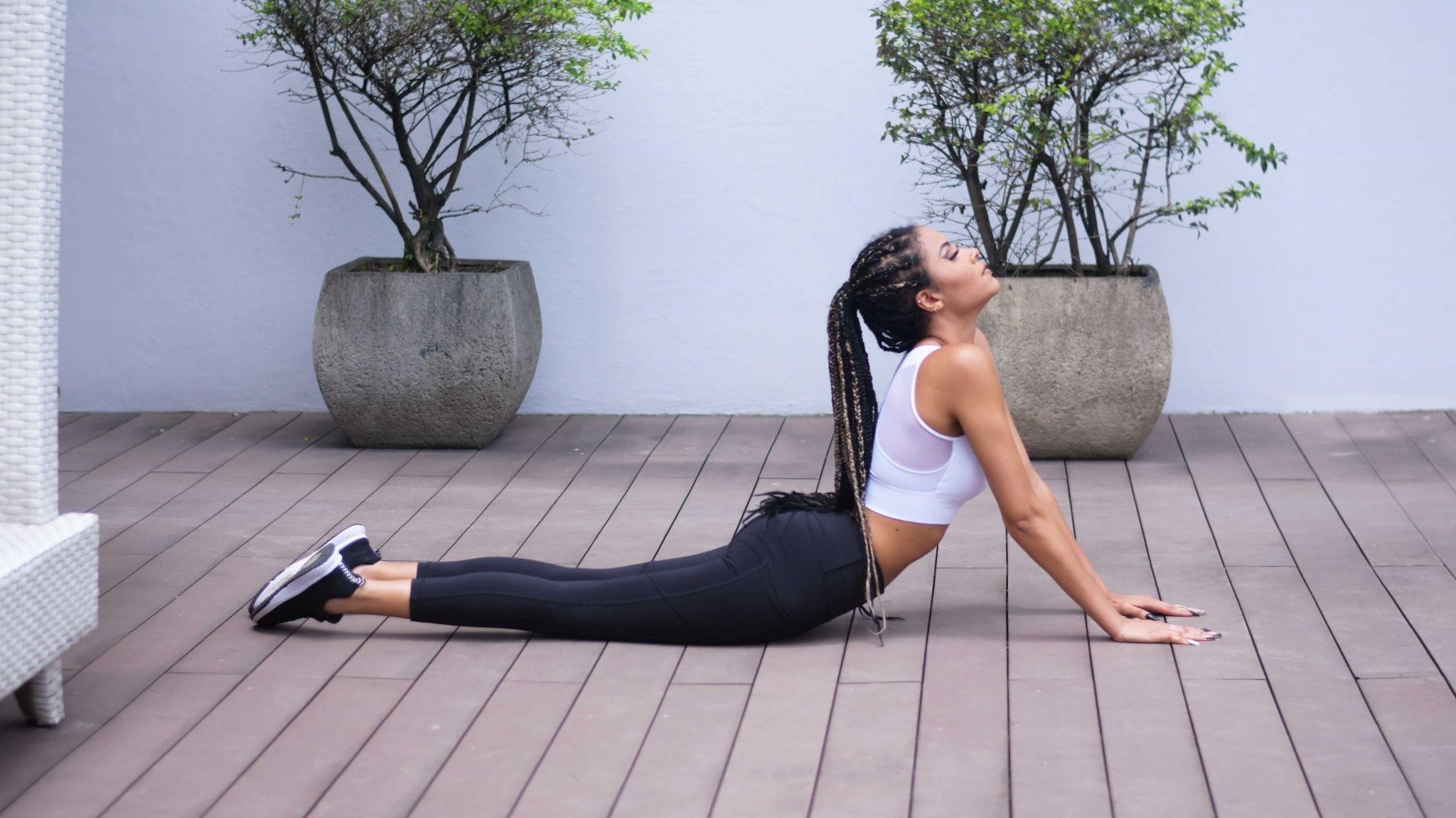
Do you constantly find yourself slouching and struggling with poor posture, wondering how to fix rounded shoulders? You're not alone. In today's fast-paced world, many people suffer from this common postural problem, which can lead to severe health issues if not addressed promptly. It's crucial to understand the importance of fixing rounded shoulders and taking action to prevent long-term consequences.
In this article, we'll provide valuable insights and practical tips on how to fix rounded shoulders for good, allowing you to stand tall and maintain a healthy posture.
Read on to discover the causes, prevention strategies, and helpful exercises to improve your posture and overall well-being, specially tailored for those suffering from back pain issues and spending long hours sitting.
Common Causes of Rounded Shoulders
The prevalence of rounded shoulders can be attributed to our increasingly sedentary lifestyles and dependence on technology. Everyday activities, such as prolonged sitting and hunching over electronic devices like smartphones and laptops, can lead to poor posture and the development of rounded shoulders. The impact of aging on posture also plays a role, as the body's natural tendency to round the shoulders increases with age.
Rounded shoulders are becoming increasingly widespread as more people spend their days working at desks and using electronic devices. According to a Harvard Health article, poor posture is a common issue that can contribute to muscle imbalances, neck and back pain, and rounded shoulders.
In the following sections, we'll delve deeper into the specific causes of rounded shoulders and discuss practical solutions on how to fix this postural issue.
Desk Jobs and Sedentary Lifestyles
A major contributing factor to the development of rounded shoulders is the rise of desk jobs and sedentary lifestyles. Many office workers and remote employees spend a significant portion of their day sitting at a desk, often in a slouched position, leading to weakened upper back and shoulder muscles. This prolonged inactivity, coupled with poor posture, puts a strain on the neck, shoulders, and spine, ultimately resulting in rounded shoulders.
The human body is designed for movement, and sitting for extended periods can have negative effects on overall health, including the development of musculoskeletal disorders like rounded shoulders and lower back pain. Research has shown that sitting for long hours can lead to a myriad of health problems, ranging from obesity and heart disease to postural issues like rounded shoulders.
To combat the adverse effects of sitting for long periods, it's important to take regular breaks, stretch, and maintain proper posture throughout the day. Implementing strategies to avoid the negative effects of prolonged sitting on your health can greatly help in preventing rounded shoulders and other postural issues. By consciously sitting up straight, engaging the core, and avoiding slouching, you can reduce the likelihood of developing rounded shoulders and improve your overall well-being.
Poor Posture and Body Mechanics
The impact of inadequate posture and improper body mechanics cannot be understated when it comes to the development of rounded shoulders. Various factors can contribute to poor posture, such as muscle imbalances, weakness, and tightness, as well as habits formed from daily activities. Slouching, leaning forward while working, and craning the neck to look at screens are examples of habits that can contribute to rounded shoulders.
Body mechanics refers to how we move and position our bodies during daily activities. Proper body mechanics help distribute weight evenly and maintain balance, reducing the risk of injury and postural problems. When body mechanics are incorrect, it places excessive strain on the muscles, joints, and spine, potentially leading to rounded shoulders and other musculoskeletal issues.
To prevent rounded shoulders and maintain good posture, paying attention to how you sit, stand, and move throughout the day is essential. Ensure your workstation is set up ergonomically to promote proper posture and consciously maintain a neutral spine while sitting and standing. Additionally, it is crucial to strengthen and stretch the muscles involved in maintaining proper posture.
A great resource on this topic is this blog post on how to improve your posture at your home office. By implementing the tips and techniques outlined in this post, you can work towards correcting your posture and preventing rounded shoulders. Remember that improving posture and body mechanics takes time and consistent effort, but the long-term benefits to your health and well-being are well worth the investment.
Injuries and Medical Conditions
Besides that, injuries and medical conditions can play a role in the development of rounded shoulders. Trauma or injuries affecting the shoulder joint, such as rotator cuff tears or dislocations, can cause the muscles and tendons in the area to weaken, making it difficult to maintain proper shoulder alignment. Additionally, prolonged immobilization of the shoulder joint, such as wearing a sling after an injury, may lead to muscle imbalances and tightness that promote rounded shoulders.
Certain medical conditions, like scoliosis or kyphosis, can also affect posture and shoulder alignment. These spinal deformities can cause the spine to curve abnormally, which may result in rounded shoulders and other postural issues. In these cases, working closely with healthcare professionals, such as physical therapists and orthopedic specialists, is essential to develop a comprehensive treatment plan addressing the underlying cause of rounded shoulders.
If you suspect that an injury or medical condition contributes to your rounded shoulders, seeking medical advice and appropriate treatment is crucial. Properly addressing these issues can help you learn how to fix rounded shoulders, improve your posture, and prevent further complications related to this postural problem.
Working Tips on How to Fix Rounded Shoulders
Posture Exercises and Stretches
Learning how to fix rounded shoulders through targeted exercises can strengthen the upper back, shoulder, and neck muscles, which play a crucial role in maintaining proper shoulder alignment. Additionally, there are specific exercises to fix rounded shoulders that can be easily incorporated into your daily routine. When these muscles are weak or imbalanced, holding the shoulders in the correct position becomes challenging, leading to rounded shoulders.


Posture exercises focus on activating and strengthening the muscles responsible for maintaining proper alignment, while stretches help to release tension and tightness in the chest and shoulder muscles. By incorporating both exercises and stretches into your daily activities, you can effectively address the muscular imbalances contributing to rounded shoulders, ultimately leading to better posture and reduced discomfort. The following sections will provide specific exercises and stretch to fix rounded shoulders and improve overall posture.
Doorway Stretch
Targeting the chest and shoulder muscles, the doorway stretch is an excellent exercise to help fix rounded shoulders. To perform this stretch:
- Stand in an open doorway and place your forearms on each side of the doorframe, elbows bent at 90 degrees
- Lean forward slightly, allowing your chest to move towards the doorway until you feel a gentle stretch in your chest and shoulders
- Hold this position for 20-30 seconds, and repeat 2-3 times daily
Overhead Stretch
The next is an overhead stretch, which is great for improving posture and reducing rounded shoulders. To perform this stretch:
- Stand or sit with your back straight
- Reach your hands above your head and clasp them together
- Gently push your hands upward, feeling the stretch in your upper back and shoulders
- Hold for 20-30 seconds and repeat 3-4 times
Wall Slides
Targeting the upper back and shoulder muscles, wall slides can be combined with other exercises to fix rounded shoulders fast. To perform wall slides:
- Stand with your back against a wall
- Position your arms in a 'W' shape with elbows and hands touching the wall
- Slowly slide your arms up and down the wall while maintaining contact between the wall and your arms, hands, and shoulders
- Perform 10-15 repetitions
Lifestyle Changes to Improve Posture
Implementing lifestyle changes is crucial to improving posture and preventing rounded shoulders. One of the most effective ways to address this postural issue is to reduce the amount of time spent sitting. As mentioned earlier, sitting for extended periods can have a negative impact on your posture, leading to rounded shoulders and other health issues.
To combat this, consider incorporating frequent breaks into your daily routine. Every hour, take a few minutes to stand, stretch, or walk around to relieve the strain on your muscles and joints. This not only helps improve posture but also promotes overall well-being.
Another lifestyle change that can help prevent rounded shoulders is maintaining an ergonomic workstation. Ensure your chair, desk, and computer setup promote proper posture and reduce the risk of developing musculoskeletal problems.
Engaging in regular physical activity is also beneficial for your posture. Incorporate exercises that strengthen and stretch the muscles responsible for maintaining proper alignment, such as yoga for rounded shoulders, Pilates, or resistance training.
Practice Mindfulness
Embracing mindfulness is a powerful approach to enhancing posture and addressing the issue of rounded shoulders. Being mindful involves being aware of your body's positioning, movements, and sensations at any moment. You can make necessary adjustments to maintain proper alignment by consciously monitoring your posture throughout the day.
To incorporate mindfulness into your routine, take brief breaks periodically to assess your body. Observe if you're slouching, hunching forward, or tensing your neck and shoulders. Upon recognizing these tendencies, gently correct your posture by sitting upright, engaging your core, and relaxing your muscles.


Use AI-Powered Modern Solutions
Incorporating innovative, AI-powered tools like our Bliink software can significantly help you in your journey to fix rounded shoulders and improve posture. Bliink is a state-of-the-art solution designed to monitor and analyze your posture in real-time, providing personalized feedback and recommendations to help you make necessary adjustments.
By utilizing advanced artificial intelligence algorithms, our software accurately detects posture problems such as rounded shoulders, slouching, or hunching. Upon identifying these issues, Bliink offers corrective suggestions and practical tips to help you maintain proper alignment throughout the day. With consistent use, Bliink can greatly assist in preventing the progression of rounded shoulders and other posture-related problems.
Change Sleeping Habits
Your sleeping habits play a significant role in maintaining proper posture and learning how to fix rounded shoulders. Adjusting your sleep position and using supportive pillows can ensure that your spine stays aligned and reduce the likelihood of developing posture-related issues.
One way to improve your sleeping posture and learn how to sleep to fix rounded shoulders is by sleeping on your back with a supportive pillow under your neck and head. This position helps maintain the natural curvature of your spine, alleviating pressure on your shoulders and neck. If you prefer sleeping on your side, use a pillow between your knees to maintain proper hip alignment and prevent your shoulders from rounding forward.
Moreover, the blog section features a comprehensive library of posture exercises, stretches, and ergonomic tips tailored to your specific needs. This extensive resource allows you to create a customized plan for addressing rounded shoulders and improving overall posture. For instance, the article on how to improve body posture at work provides valuable insights into maintaining proper alignment while working remotely.
In addition to its posture analysis capabilities, Bliink offers features like break reminders and wellness challenges, encouraging you to stand, stretch, or walk periodically. These frequent breaks are essential for combating the negative effects of prolonged sitting and promoting better posture.
Discover the full range of Bliink's features and functionalities by visiting our product page. By leveraging modern, AI-powered solutions like BLiiNK, you can effectively address rounded shoulders, improve your posture, and enhance your overall well-being.
Investing in a high-quality, supportive mattress is essential for maintaining good posture while sleeping. Aim for a mattress that provides even support and contours to your body's natural shape. A bed that's too soft or firm can contribute to misalignment and exacerbate rounded shoulders.
By making these simple changes to your sleeping habits, you can promote better posture and work towards fixing rounded shoulders. Adopting healthier sleep practices not only benefits your posture but also contributes to overall well-being and a more restful night's sleep.
Conclusion
Ultimately, learning how to fix rounded shoulders involves a combination of targeted exercises, lifestyle changes, and mindfulness. By incorporating these strategies into your daily routine, you can effectively improve your posture and overall well-being.
Don't forget to explore BLiiNK's AI-powered solutions to optimize your workstation setup and maintain a healthy posture. Request a free demo with the BLiiNK team and experience the benefits of better posture and increased productivity today!
